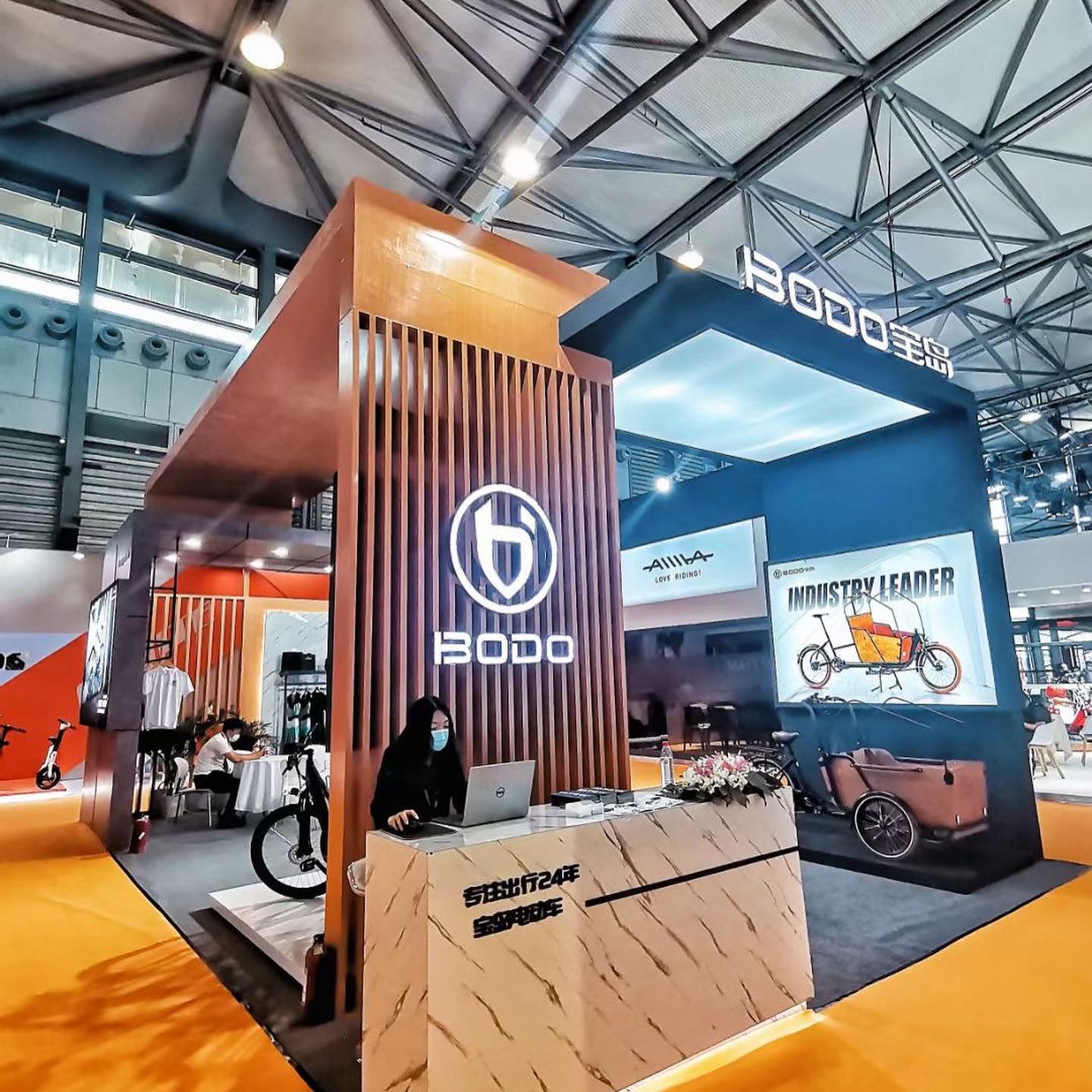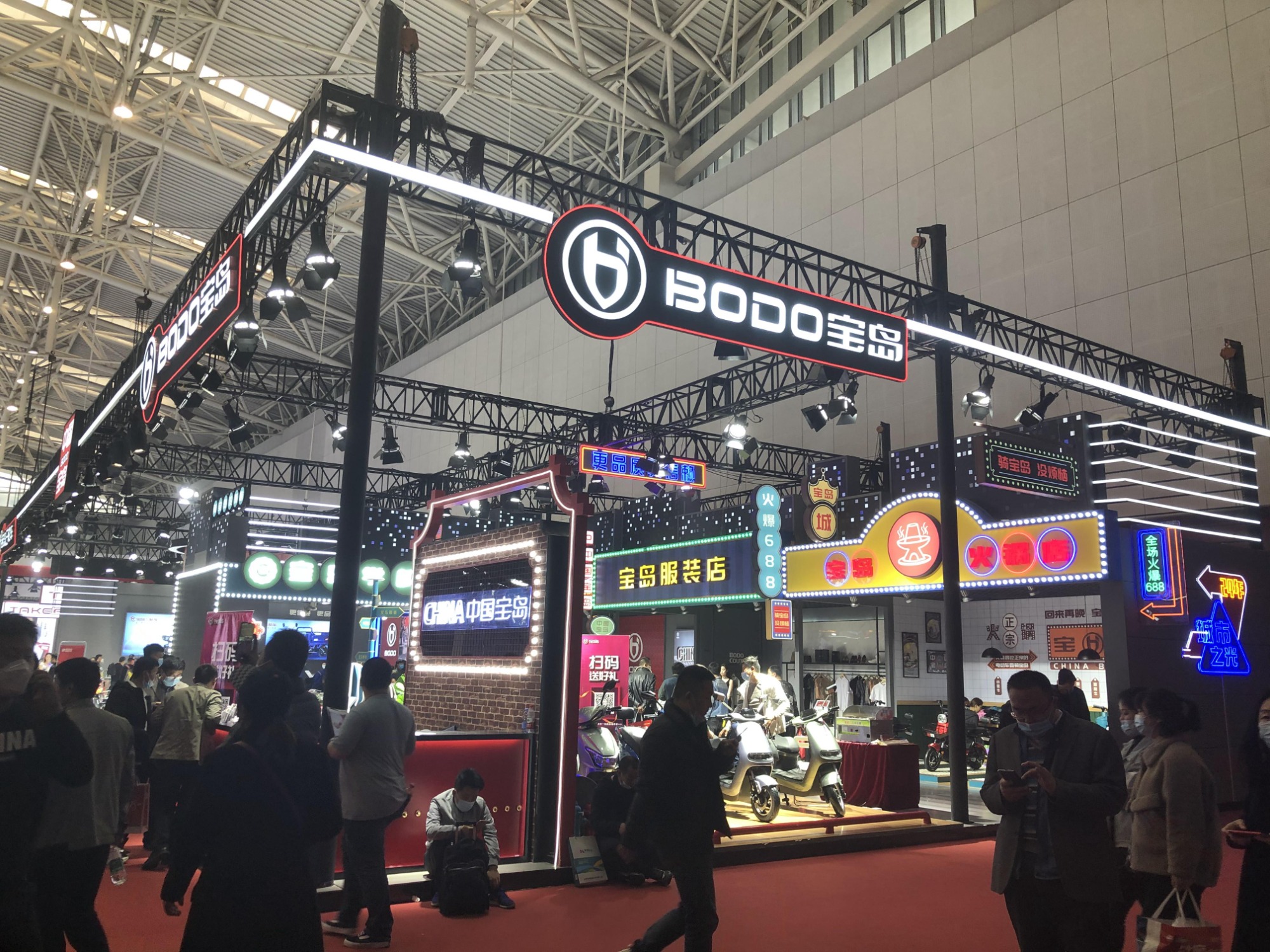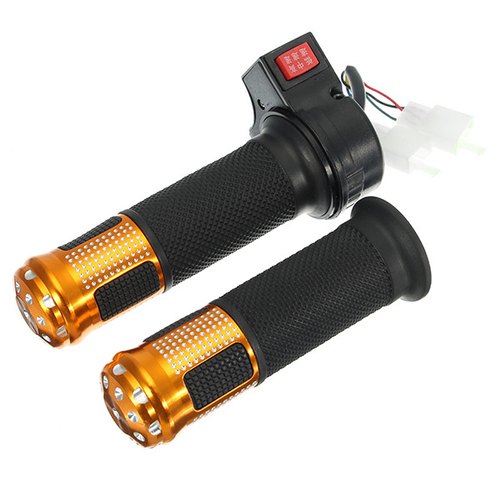
Your electric bicycle’s throttle is the physical connection between you and your ebike. Through just a few square centimeters of surface area, a magical bond is formed between man and machine that allows the two to feel each other and respond to each others thoughts and desires.
Ok, perhaps I’m romanticizing it just a bit, but the type of throttle on an ebike really does affect the entire riding experience.
There are three main types of throttles: thumb throttles, half twist throttles and full twist throttles. Of course, each type of ebike throttle has its own advantages and disadvantages, and each have their own effect on your riding experience.
Each also have adamant supporters ready to go to blows to defend their throttle choice.
Rarely have I ever seen support for a specific ebike option so evenly distributed among riders, but that is the case when it comes to ebike throttle choice. Many people are quick to claim that one of the three electric bicycle throttles is the superior choice and just as many people are quick to discount that type of ebike throttle, wishing it upon only their most despised of enemies.
So let’s take a detailed look at the main three different types of ebike throttles and figure out what all the fuss is about.

The thumb throttle, no surprise here, is designed to be operated by the thumb. It consists of just a small lever that protrudes from the handlebar towards the rider.
Thumb throttles are the least obtrusive of the three types of ebike throttles. One thing I love about the thumb throttle is that it almost never interferes with brake levers or twist shifters. It only occasionally interferes with lever shifters, but this can usually be fixed by slightly rotating the thumb throttle’s own lever up or down to avoid the path of the shifter lever.
Thumb throttles allow the greatest freedom of handle bar accessories, like lights and mirrors, since they take up so little room. They also allow you to use any aftermarket handle bar grips you’d like, since they don’t reach to the end of the handlebar.
Another unexpected advantage of thumb throttles is a slight increase in safety. As we’ll soon see, other throttles have a higher chance of accidental engagement, either by bumping into a wall, doorway or other object – or simply through an inattentive rider.
The main complaint against thumb throttles is thumb exhaustion. It doesn’t sound like such a serious problem, but after long stretches of riding at full throttle many people complain that their thumb simply gets sore and tired from holding the throttle’s lever down the entire time. Unlike other throttle types that spread the load out to the whole hand, thumb throttles focus the entire force of the return spring solely on the thumb.
Another disadvantage of thumb throttles is that they require you to constantly keep one fewer finger on the handlebars. The better grip on the handlebar you have, the better you can handle the ebike, especially in an emergency situation where you may have just milliseconds to think and take evasive action. This situation, while rare, isn’t the best time to have your strongest digit off hanging out by himself.
I personally discovered another unexpected downside of thumb throttles while commuting in the very cold winters of Pittsburgh. While your four fingers are wrapped around the handlebar and help keep each other warm, your lonely thumb protrudes far below the handlebar, hanging out in no man’s land and bearing the full brunt of the chilly air racing by. Combined with extremely cold temperatures and a fast ebike, you’ve got yourself a recipe for a frozen thumb. It sounds silly, but even through thick leather gloves, a 15 minute commute in the middle of winter consistently made my right thumb feel like it was about to fall off. Certainly it’s a problem only relevant to a certain demographic, but now you can’t say I didn’t warn you.

Full twist throttles are sort of the antithesis of thumb throttles as they are the largest type of ebike throttle and require the whole hand to operate. The full twist throttle takes up the entire end of the handlebar, completely replacing whatever grip would originally be on the end of handlebar. To operate it, the rider simply grabs a handful of throttle and twist it back towards himself.
Anyone who has ridden a motorcycle or moped will find the full twist throttle familiar. It operates just like the throttle on most motorcycles. Many people prefer full twist throttles because they are operated by the full hand – all five fingers grip that sucker. That allows you to hold on tight, handle well and use your wrist instead of your thumb to apply the twisting motion.
For that same reason though, many people complain that full twist throttles lead to a sore wrist. Just like riding full speed with a thumb throttle can exhaust the thumb, twist throttles tend to tire out the rider’s wrist over long periods.
Another disadvantage of full twist throttles is that they are most likely to be accidentally engaged. Because the throttle continues all the way to the end of the handlebar, bumping into walls, doorways and even handlebars of other bikes in close proximity can send the bike accidentally accelerating off into the distance with the unprepared rider trying to hang on. I’ve personally seen this happen a few times.
Ok fine, I’ve done it a few times.
For the same reason that full twist throttles extend to the end of the handlebars, they make using handlebar end mirrors impossible. This might not be a problem for you, but then again you might not be aware of the awesome Mirrycle handle bar end mirror.

Half twist throttles are like the little brother of full twist throttles. They operate the exact same way as a full twist throttle except that they don’t reach all the way to the end of the handle bar. They reach about half way. (Get it? Half twist? Haaaaalf twi- oh forget it)
The missing half of the half twist throttle is replaced with a matching rubber grip that doesn’t twist, it remains firmly attached to the handlebar. Half twist throttles have most of the same advantages as full twist throttles, they allow you to use multiple fingers, usually the first two fingers and thumb, and let you use your wrist to apply the twist motion to the throttle.
The half twist throttle is also slightly safer than the full twist when it comes to accidental engagement. It can still be bumped as it slides past obstacles, but because it doesn’t reach to the end of the bar, accidental engagement is less likely.
Also, because the half twist doesn’t reach to the end of the handlebar, you’re free to use accessories on the ends of your handlebars, including the magical Mirrycle handlebar end mirror.
The half twist throttle also has a unique solution to avoid wrist exhaustion. When operating at full throttle the rider can grip the throttle with three fingers and leave two fingers on the rubber grip which is firmly attached to the handlebar. This gripping arrangement keeps the half twist throttle from springing back to zero-throttle position and allows your grip on the handlebar, instead of your wrist muscles, to hold the tension in the throttle spring. Over long rides this position proves more comfortable and reduces or removes the exhaustion associated with thumb or full twist throttles.
In addition to the three main different styles of throttles, thumb, full twist and half twist, there are also many types of throttles with built in accessories. The most common throttle accessory is a battery life indicator. This is usually a set of three or more colored LEDs that indicate a full battery, partially discharged battery or depleted battery.
These LED battery meters are notoriously inaccurate. They work not by measuring the actual capacity of the battery but rather by measuring the voltage level. Lithium batteries hold a fairly constant voltage throughout the middle part of their discharge curve, meaning these battery meters are really only accurate near the top and bottom ends. Basically, if all your lights are on you know your battery is mostly charged and if the lights are a near the end (red LED) then you know your battery is about to die. In the middle, your guess is as good as your throttle’s.
Many ebike throttles also come with buttons that can be used to control different functions. The most common is an on/off button to start your ebike. These buttons can also be used for things like lights and cruise control, assuming your ebike supports these features. Some throttles have momentary contact buttons that only work when the button is held down. These types of buttons are better for features like horns or regenerative braking, something you’d want temporarily and only for as long as the button is pressed.
Some throttles come with key switches that can be used to start the ebike. This is a convenient way to add some extra security to your ebike. The extra security is largely superficial, as anyone with a pair of wire cutters could easily “hotwire” your ebike by shorting the throttle wires to by pass your switch. In this case, the security is more against some idiot trying to turn your ebike on while you’ve left it parked. Either way, it’s still one more line of defense, and makes your ebike look just a little less desirable to potential thieves. Plus it’s kind of fun to have a key that starts your ebike.
At the end of the day, throttle choice really comes down to personal opinion. Each ebike throttle comes with different pros and cons, so it is up to you to decide which sacrifices you want to make and what advantages are more important to you on your own electric bicycle. I’ve tried to present the arguments for each of the three throttles as unbiasedly as possible so that you can make your own decision and choose the throttle that is right for you.
But if you ask me, “HALF TWIST FOR LIFE, BABY!!!”
It should also be noted that there is one other, much rarer type of throttle called the “push button” throttle. It’s pretty much inferior to these other three throttle types in almost every way. It works by applying full acceleration when the button is pressed, then providing no throttle when the button is released. Imagine, for a moment, if your car’s gas pedal was replaced with a simple on/off (full-gas/no-gas) button.
Throttles are meant to be controlled gradually, not used in an all-or-nothing fashion. Steer clear of push button throttles.
 2021 China International Bicycle Exhibition
2021 China International Bicycle Exhibition
 2021 the 20th North China International bicycle and electric vehicle exhibition
2021 the 20th North China International bicycle and electric vehicle exhibition
 Throttle grips VS pedal assist electric bike
Throttle grips VS pedal assist electric bike
 Merry Christmas and Happy New Years
Merry Christmas and Happy New Years